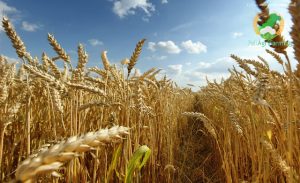[email protected]
soil organic material
Soil organic matter (SOM) is the organic matter component of soil, consisting of plant and animal residues at various stages of decomposition, cells and tissues of soil organisms, and substances synthesized by soil organisms.
3 main components of organic matter in soil:
There are 3 main components of organic matter in soils
- dead forms of organic material – mostly dead plant parts
- living parts of plants – mostly roots
- living microbes and soil animals
By far the largest component is the dead matter – it constitutes about 85% of all organic matter in soils. Living roots make up about another 10% and the microbes and soil animals make up the last few percent.
Compounds types on the basis of decomposition:
Living organisms are made up of thousands of different compounds, so when they die there are thousands of compounds in the soil to be decomposed. As these compounds are decomposed, the organic matter in soil is transformed and gradually changes so that eventually it is no longer recognisable as part of the original plant. These are:
- Breakdown of compounds that are easy to decompose – like sugars, starches and proteins.
- Breakdown of compounds that take several years to decompose like cellulose (an insoluble carbohydrate found in plants), lignins (a very complicated structure that is part of wood).
- Breakdown of compounds that can take up to 10 years to decompose – like some waxes and the phenols. This also includes compounds that have formed stable combinations and are located deep inside soil aggregates and are therefore not accessible to soil organisms.
- Compounds that take tens, hundreds or thousands of years to decompose include humus-like substances which are the result of integration of compounds from breakdown products of plants and those generated by microorganisms humus-like substances.
Organic matter or organic materiel:
Many times we think of organic matter as the plant and animal residues we incorporate into the soil. We see a pile of leaves, manure, or plant parts and think, “Wow! I’m adding a lot of organic matter to the soil.” This stuff is actually organic material, not organic matter.
What’s the difference between organic material and organic matter? Organic material is anything that was alive and is now in or on the soil. For it to become organic matter, it must be decomposed into humus. Humus is organic material that has been converted by microorganisms to a resistant state of decomposition.
How does composted grape marc affect soil microorganisms?
In viticultural regions, the harvest waste (or grape marc) poses a significant management problem for growers. It is because of this that many growers have been informally composting grape marc and applying it under-vine as an organic mulch.
A field trial near Busselton in Western Australia measured changes in soil biological fertility following the application of grape marc on the ground under vines. The grape marc was applied at 60 tonnes/ha and at 120 tonnes/ha. The quantity of microorganisms in the soil (microbial biomass) were assessed at a later time.
The study found that 8 weeks after application of grape marc, the quantity of soil organisms (microbial biomass) had almost doubled and at 16 weeks it was three times greater. Both quantities of grape marc had the same effect. The soil microbial biomass plays a significant role in organic matter turnover and nutrient cycling. Therefore, increases in microbial biomass may lead to improved nutrient cycling and increased soil biological fertility.
How Much Organic Matter Is in the Soil?
An acre of soil measured to a depth of 6 inches weighs approximately 2,000,000 pounds, which means that 1 percent organic matter in the soil would weigh about 20,000 pounds per acre. Remember that it takes at least 10 pounds of organic material to decompose to 1 pound of organic matter, so it takes at least 200,000 pounds (100 tons) of organic material applied or returned to the soil to add 1 percent stable organic matter under favorable conditions.
How Can I Maintain or Improve Soil Organic Matter Levels?
Building soil organic matter is a long-term process but can be beneficial. Here are a few ways to do it.
- Reduce or Eliminate Tillage
Tillage improves the aeration of the soil and causes a flush of microbial action that speeds up the - decomposition of organic matter. Tillage also often increases erosion. No-till practices can help build organic matter.
- Reduce Erosion
Most soil organic matter is in the topsoil. When soil erodes, organic matter goes with it. Saving soil and soil organic matter go hand in hand. - Soil-Test and Fertilize Properly
You may not have considered this one. Proper fertilization encourages growth of plants, which increases root growth. Increased root growth can help build or maintain soil organic matter, even if you are removing much of the top growth. - Cover Crops
Growing cover crops can help build or maintain soil organic matter. However, best results are achieved if growing cover crops is combined with tillage reduction and erosion control measures.











